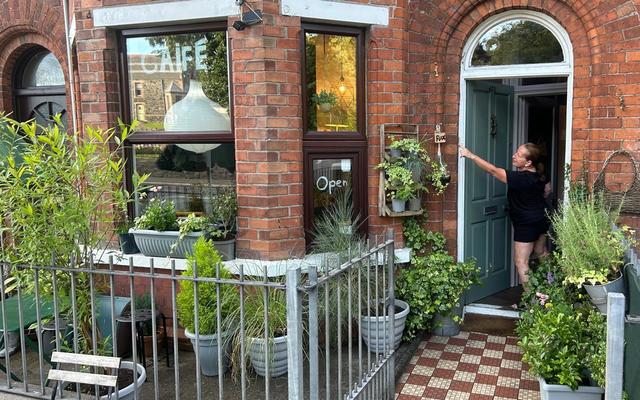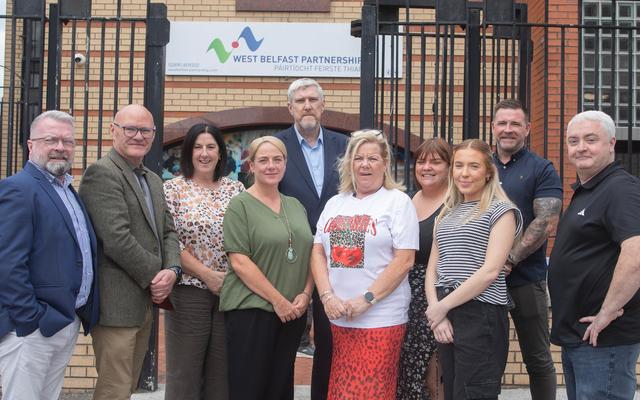In 2009, a group of young architects in a hurry got together to launch Forum for an Alternative Belfast as a vehicle for their inclusive, people-first vision for Belfast.
Their first big proposal: build tens of thousands of homes in Belfast city centre and its surrounding abandoned shatter zones in order to solve the housing crisis and revitalise the moribund city core.
ABANDONED: The former Corporation Street dole site lies dormant
12 years, one property crash and one pandemic later, Belfast City Council has just published its own groundbreaking new blueprint for a prosperous future Belfast. Their key proposal: build 11,500 new homes in the city centre by 2035.
"As debates continue around how city centres can bounce back from the challenges brought about by the pandemic, it is essential that efforts in Belfast are focused on bringing forward residential schemes of quality in the city centre," says the recently-published report of the Council-appointed Belfast Innovation and Inclusive Growth Commission.
DERELICTION: A architectural jewel in Belfast's crown, the art-deco Bank of Ireland building lies idle amidst a North Belfast wasteland
But, far from feeling chagrined at the tardiness of the City Hall response to the 2009 Forum for Alternative Belfast 'Missing City Map' report which highlighted the acres of unused space in the city core, Mark has warmly welcomed the Council conversion to his cause.
"It's good to see and I welcome their proposal but for now it's only an aspiration," he said. "The big question is can the Council and its partners bring forward plans to ensure the city core not only has high standard housing but also all the other amenities which make city living possible. And, of course, they have to ensure that projects like the York Street Interchange don't further blight the city core and the lives of those who live on the edge of the city."
HOUSING PLAN: Derelict buildings in Belfast city centre
He adds: "It's a fact that we now have more people residing in the city centre than we had back then in 2009 but the flat blocks in which they live are generally of poor standard, without balconies, largely unattractive to families, and disconnected from any type of living city centre with schools, parks, doctor's surgeries and the other amenities which make city living viable."
#ResetforGrowth report could be a game changer. Recognition that housing is core to #Belfast’s economic future & commitments by city partners to transition to net zero @nihecommunity a lead partner & I’m delighted to have been a Commission member. https://t.co/Zy9GpmqmQO
— Grainia Long (@GrainiaLong) June 29, 2021
And the crusading urbanist says the provision of up to 5,000 student accommodation units in the city side adjacent to the new University of Ulster campus can be of benefit to the city— if some of the graduating students can be encouraged to stay in the city centre. "But to do that, they need good quality, affordable homes to rent or buy as they start their professional careers and then, later, family homes of the same quality. To do all that, the game-changer would be the provision of a school in the city centre."
AS YOU WERE: Architects Mark Hackett, Ken Sterrett and Declan Hill present Lord Mayor Naomi Long with the Missing City Map in 2010
Other proposals in 'Reset for Growth', the report of the Belfast Innovation and Inclusive Growth Commission, include:
- Maximising opportunities from the North's new status within the Single Market and Customs Union post-Brexit
- Securing £350m of funding annually from 2025 for innovative research and development projects in line with the vision of the recently-established Innovation City Belfast initiative which hopes to benefit from some of the promised £1bn in City Deal funding.
- Reducing carbon emissions by 66 per cent by 2025 - in the process creating a jobs bonanza in green industries. Says the report: "The Commission supports recent research on urban responses to economic crises which concluded that a green route out of the Covid-19 crisis can be highly economically effective." This would feed into the Council's Belfast Agenda ambition of creating 40,000 new jobs by 2035.
- Improving global, all-island and east-west connections. The report says the Dublin-Belfast Economic Corridor is "a central pillar for the development of long-term inclusive economic sustainability in Belfast and Northern Ireland".
Finance Minister @conormurphysf met with Innovation and Inclusive Growth Commission members today to hear about their #ResetForGrowth report on inclusive & green economic growth. pic.twitter.com/HkjCgMhe2P
— Dept of Finance (@dptfinance) July 28, 2021
The Innovation and Inclusive Growth Commission was chaired by Sir Michael Lyons, non-executive chairman of the English Cities Fund.








